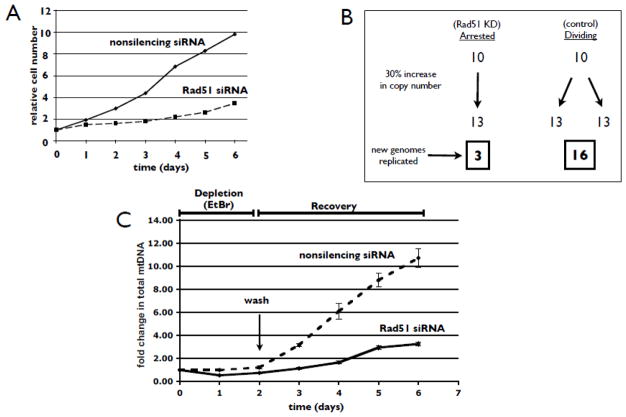Fig. 4.
RNAi-mediated knockdown of Rad51 significantly slows cell division and mtDNA replication demand during recovery from mtDNA depletion. (A) U20S cells were transfected with nonsilencing or Rad51-specific siRNAs (10 nm), and simultaneously treated with 50 ng/mL EtBr. Two days following treatment, cells were washed and allowed to recover for 4 days. Cells were trypsinized and counted every 24 h. Cell numbers are displayed relative to initial seeding. (B) Model illustrating the difference in DNA replication demand between cycling and non-cycling cells. During the course of one population doubling time, an arrested cell must only replicate a number of genomes equivalent to the observed copy number increase (left pathway). An actively dividing cell must duplicate its mtDNA compliment in addition to replication required to account for the increase in copy number observed (right pathway). (C) U20S cells were transfected with nonsilencing or Rad51-specific siRNAs and treated with EtBr as in (A). Total DNA was isolated every 24 h for qPCR determination of copy number per cell. Fold change in total mtDNA in each population was determined by multiplying copy number per cell by relative cell count for each day. Error bars indicate S.E. (n = 4).

